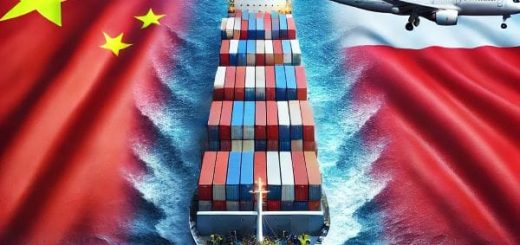Sunshine State Savings: Master Chinese Goods Consolidation for Florida Businesses
Why Florida’s Logistics Landscape Demands Consolidation
Florida’s 1,350-mile coastline positions it as a gateway for global trade—yet hidden costs lurk beneath its sunny surface. Miami Port congestion causes 7–14-day delays during peak season 5, while hurricane-related disruptions spike insurance premiums by 15–30% 9. For businesses sourcing electronics from Shenzhen, textiles from Guangzhou, and ceramics from Jingdezhen, fragmented shipping means:
- Triple customs clearance fees ($25–$50 per shipment) 9
- 23% damage rates for fragile items in multi-leg transit 2
- Wasted storage costs at Jacksonville warehouses when partial shipments arrive early 1
Consolidation slashes these losses. Tampa-based importer Gulf Coast Homewares cut costs by 38% after merging shipments from 12 suppliers into bi-weekly consolidated loads 3.
The 5-Step Florida Consolidation Blueprint
Step 1: Supplier Coordination & Hub Optimization
Direct all Chinese suppliers to a Pearl River Delta hub (Shenzhen/Guangzhou). These hubs offer:
- Real-time dashboard tracking of incoming inventory
- 90-day free storage to synchronize orders
- Barcode scanning to prevent misrouted goods 3
Pro Tip: Require suppliers to use QR-coded shipping labels tied to your ERP system for live updates.
Step 2: Military-Grade Quality Control
Florida’s humidity demands pre-shipment inspections:
- Corrosion testing for electronics/metal goods
- Load stability simulations for furniture shipped via sea
- Moisture sensor logs to prevent mold in transit 2
Case Study: Orlando retailer SunTech rejected 22% of LED fixtures after consolidation hub testing revealed faulty humidity seals—saving $18,000 in returns 3.
Step 3: Volume-Optimized Packing
Maximize container space with:
- Nesting techniques (e.g., stuffing textiles into furniture cavities)
- Vacuum-sealed compression for plush goods (reduces volume by 60%)
- Suspended cushioning systems using Instapak foam for ceramics 2
Step 4: Smart Route Selection for Florida
Table: Florida-Bound Transport Tactics
| Method | Cost | Time | Best For | FL Advantage |
|---|---|---|---|---|
| Sea LCL via Panama | $90–$150/m³ | 35–45 days | Non-urgent: Furniture, garden sets | Avoids Miami congestion via Port Everglades |
| Rail + Truck | $3.80/kg | 26–30 days | Mid-value: Electronics, decor | Chicago rail hub → Florida trucks (avoid coastal delays) |
| Expedited Air | $5.20–$6.80/kg | 5–8 days | Urgent: Fashion, custom orders | Direct Miami flights clear customs in <4 hrs |
| Hybrid (Air + Sea) | $4.10/kg avg | 12–18 days | Mixed-priority shipments | Splits clearance: Air to MIA, sea to JAX |
Key Insight: Use Arctic routes for Q4 shipments to avoid Panama Canal surcharges (now $5,000 per container) 510.
Step 5: Florida-Focused Customs Mastery
Prevent costly delays with:
- Pre-cleared DDP (Delivered Duty Paid): Embed all tariffs upfront—no surprise $250 customs processing fees 9
- HS code optimization: Classify goods under Florida-friendly categories (e.g., agricultural equipment = 0% duty)
- Hurricane season clause: Insurance riders covering storage fees during port closures 4
Case Study: Miami Fashion Distributor’s 44% Cost Cut
Boutique Imports LLC faced:
- $12,000/month in fragmented air freight from Hangzhou
- 31% customs hold rate at MIA
- 18% damage rate on delicate fabrics
Their consolidation turnaround:
- Partnered with Ningbo-based hub for QC/consolidation
- Shipped 80% volume via sea LCL through Port Tampa Bay
- Used AI route optimizer to dodge hurricane delays
Results: 44% lower shipping costs, 98% damage-free deliveries, 3-hour average customs clearance 510.
Future-Proofing: Next-Gen Consolidation Trends
- AI-Predictive Routing: Algorithms forecasting hurricane paths + port congestion (e.g., reroute from Miami to Mobile, AL) 10
- Nearshoring Hybrid Hubs: Bulk ship to Mexico’s Lazaro Cardenas Port, then truck to Florida in 4 days—cuts last-mile costs by 30% 7
- Blockchain Audit Trails: Tamper-proof QC records proving ethical sourcing—critical for Florida’s SB 7062 ESG compliance 10
The Bottom Line
For Florida businesses, consolidation isn’t logistics—it’s profit engineering. By merging shipments, you transform Florida’s geographic liabilities into unbeatable advantages: faster Latin American re-exports, hurricane-resilient routing, and costs that undercut competitors still bleeding cash on direct shipments.

